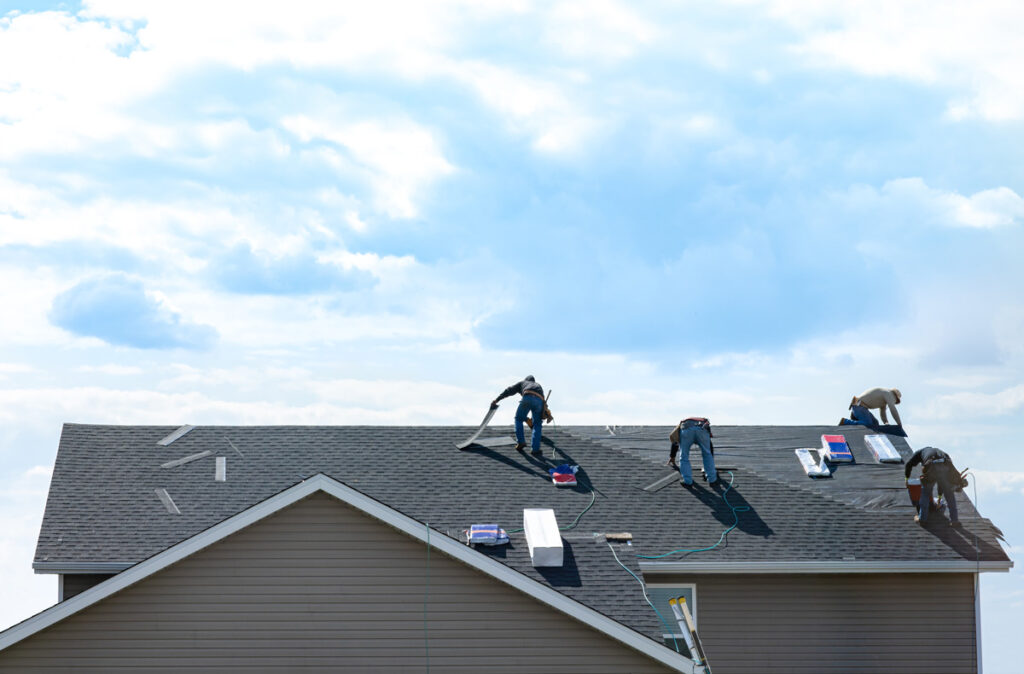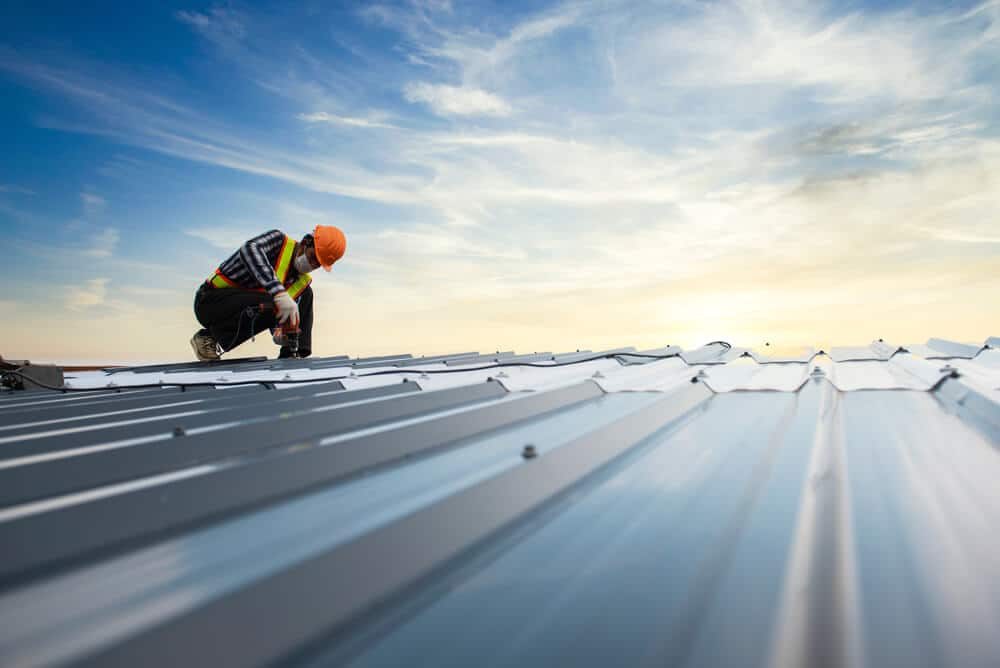Roof Repair Oahu: Quick and Affordable Roof Deals With Near You
Roof Repair Oahu: Quick and Affordable Roof Deals With Near You
Blog Article
Recognizing the Different Types of Roofing Systems: A Comprehensive Overview for Homeowners
With a variety of alternatives-- ranging from the traditional gable to the modern flat-- each type offers unique advantages and challenges that need to straighten with the homeowner's details demands and ecological factors to consider. As we explore the ins and outs of numerous roofing system kinds, it ends up being obvious that one size does not fit all; the best selection might surprise you.
Gable Roofings
Gable roof coverings, defined by their triangular form, are amongst one of the most popular roof designs as a result of their simpleness and effectiveness in dropping water and snow. This design features 2 sloping sides that satisfy at a ridge, permitting reliable water drainage and lessening the danger of water build-up. The high pitch commonly related to gable roof coverings boosts their ability to deal with heavy precipitation, making them suitable for various climates.
Along with their practical advantages, gable roofing systems provide visual adaptability. They can be adapted to various building designs, from typical to modern-day homes. The layout can also suit additional functions such as dormer windows, which improve natural light and ventilation in the attic area.
Moreover, gable roof coverings supply ample area for insulation, adding to energy efficiency. House owners can pick from a selection of roof covering materials, including asphalt shingles, metal, and floor tiles, better improving customization options.
Regardless of their advantages, saddleback roofs may require added assistance in locations vulnerable to high winds or heavy snowfall. Overall, the gable roof continues to be a favored selection because of its blend of capability, sturdiness, and aesthetic charm.
Apartment Roofs
Flat roofing systems are typically recognized for their minimalist layout and useful applications, specifically in commercial and commercial setups (oahu roofing). These roof coverings feature a horizontal or almost horizontal surface area, which enables very easy building and flexible space application. While they may lack the visual charm of angled roofs, flat roof coverings provide many benefits, particularly in city atmospheres where making best use of room is vital
Among the primary benefits of level roof coverings is their access. Homeowners can make use of the roof covering space for numerous objectives, such as roof gardens, balconies, or solar panel installments. In addition, level roofs are usually much more economical to set up and preserve contrasted to their sloped equivalents, as they need fewer materials and labor.
Common materials utilized for level roof coverings include built-up roof (BUR), changed asphalt, and single-ply membrane layers, each offering distinct benefits. On the whole, flat roof coverings serve as a practical and versatile option for many home owners and businesses alike.
Hip Roofing Systems
Hip roofings are defined by their sloped sides that assemble at the top, developing a ridge. This style stands out from gable roof coverings, as all four sides of a hip roof slope downwards toward the walls, providing a more secure structure. The angle of the inclines can differ, permitting flexibility in architectural looks and performance.
One of the primary advantages of hip roofings is their ability to stand up to hefty winds and negative weather conditions. The sloped surface areas allow better water drainage, minimizing the risk of leakages and water damages. In addition, hip roofing systems use increased attic space, which can be utilized for storage space or perhaps transformed right into habitable locations.
However, constructing a hip roof can be extra complicated and pricey than simpler roof covering types, such as saddleback roofs. The additional material and labor associated with developing the slopes and guaranteeing proper architectural honesty can lead to greater costs. Regardless of these drawbacks, lots of home owners favor hip roofing systems for their durability, visual appeal, and potential for energy efficiency.
Mansard Roofings
Mansard roofings, frequently acknowledged by their one-of-a-kind four-sided design, feature 2 inclines on each side, with the reduced incline being steeper than the top. This architectural style, originating from France in the 17th century, is not only visually check these guys out enticing yet useful, as it makes the most of the useful space in the top floorings additional resources of a building. The steep reduced incline permits even more headroom, making it a suitable choice for lofts or attic rooms, which can be converted into living areas.
Mansard roof coverings are characterized by their adaptability, accommodating numerous architectural designs, from standard to modern. They can be constructed with different products, consisting of asphalt roof shingles, slate, or steel, offering property owners with a variety of choices to suit their spending plans and preferences. Furthermore, the layout enables the assimilation of dormer home windows, improving all-natural light and ventilation in the top degrees.
Nevertheless, it is vital to consider the prospective disadvantages. Mansard roofings might require more maintenance as a result of the complexity of their layout, and their steep slopes can be challenging for snow and rainfall overflow. Generally, mansard roofing systems incorporate style with usefulness, making them a preferred selection among property owners seeking unique building functions.
Lost Roof Coverings
As homeowners progressively look for simpleness and capability in their architectural layouts, dropped roofing systems have arised as a preferred selection. Defined by a single sloping airplane, a shed roof provides a minimalist aesthetic that matches various home designs, from modern to rustic.
Among the primary advantages of a shed roofing is its uncomplicated building and construction, which often translates see this here to decrease labor and material costs. This layout permits reliable water drain, reducing the risk of leakages and water damage. Additionally, the vertical incline offers adequate room for skylights, enhancing all-natural light within the inside.
Shed roofs also supply flexibility in terms of usage. They can be successfully integrated into additions, garages, or outdoor frameworks like sheds and pavilions. Additionally, this roof covering style can suit various roof materials, including metal, asphalt roof shingles, and even eco-friendly roofings, lining up with eco-friendly campaigns.
Nonetheless, it is necessary to take into consideration regional environment problems, as hefty snow tons might necessitate modifications to the roof covering's angle or structure. On the whole, lost roof coverings present a useful and aesthetically pleasing alternative for property owners aiming to optimize capability without endangering style.
Final Thought


Gable roofing systems, identified by their triangular shape, are among the most popular roof styles due to their simplicity and effectiveness in dropping water and snow. oahu roofing. The steep pitch frequently linked with gable roof coverings boosts their capacity to manage hefty precipitation, making them suitable for numerous environments
While they may do not have the aesthetic charm of pitched roofing systems, level roofings offer many advantages, particularly in metropolitan environments where optimizing room is crucial.

Report this page